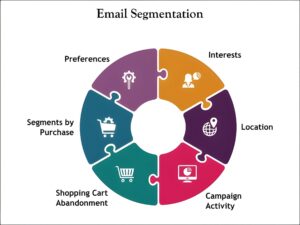Building Smart Forms That Learn from Users: The Future of Data Collection
In today’s digital landscape, forms are everywhere-from contact pages and surveys to checkout processes and registration flows. But traditional static forms no longer cut it when it comes to driving user engagement and gathering accurate data. Enter smart forms that learn from users. These dynamic, adaptive forms harness the power of artificial intelligence and machine learning to optimize the user experience, reduce friction, and improve data quality.
In this comprehensive guide, you’ll learn what smart forms are, why they matter, and how to build them effectively. We’ll explore key benefits, practical tips, and real-world examples to help you create forms that truly resonate with your audience and boost your conversions.
What Are Smart Forms That Learn from Users?
Smart forms are interactive web forms designed to adapt and personalize their behavior based on user input and past interactions. Unlike traditional forms with fixed fields and static logic, smart forms use technologies like:
- Machine learning algorithms to predict the best questions or data fields
- Conditional logic that dynamically shows or hides fields based on user responses
- Auto-completion and auto-suggestions to speed up data entry
- Behavioral data analysis that learns from user habits and preferences
The goal? To create a form that becomes easier, faster, and more relevant for each returning user, boosting form completion rates and overall user satisfaction.
Why Build Smart Forms That Learn from Users?
Here are some compelling reasons why investing in smart forms is a game-changer for businesses and websites:
- Improved User Experience: Smart forms reduce cognitive overload by only showing necessary fields based on what the user needs or has entered previously.
- Higher Conversion Rates: By simplifying the process and offering personalized assistance, smart forms reduce abandonment rates.
- Accurate Data Collection: Predictive typing and adaptive questions help minimize errors and improve data quality.
- Time Savings: Users spend less time filling out forms, which also decreases bounce rates.
- Actionable Insights: Analyzing user behavior on forms can inform marketing and product decisions.
Key Components to Build Smart Forms That Learn
Building intelligent forms requires the integration of several key components and technologies:
1. Conditional Logic and Branching
Use conditional fields that dynamically change based on user input. For example, if a user selects “Business” instead of “Individual,” show relevant business-specific questions.
2. Machine Learning Integration
Implement models that learn from historical data to predict what users might need next. Examples include genearting autofill suggestions or prioritizing fields.
3. Data Pre-Filling and Auto-Completion
Leverage past form submissions, cookies, or CRM data to pre-fill form fields, speeding up the process for returning users.
4. User Behavior Analytics
Track where users hesitate, abandon forms, or spend the most time. Use this data to continually optimize the form interface and questions.
5. Responsive and Accessible Design
Ensure forms work seamlessly on all devices and are accessible to users with disabilities, improving inclusivity and overall form completion.
Practical Tips for Building Smart Forms
- Start Simple: Begin by implementing basic conditional logic and gradually add learning capabilities.
- Progressive Disclosure: Only ask for critical information up front; reveal more fields as needed.
- Use Clear, Concise Labels: Make sure form fields have intuitive and user-friendly labels and instructions.
- Test and Iterate: A/B test different form layouts and machine-learning models to find what works best.
- Protect User Data: Ensure your forms comply with GDPR, CCPA, and other privacy laws to earn user trust.
- Leverage Popular Form Builders: Use WordPress plugins like Gravity Forms or WPForms combined with AI tools for easier integration.
Case Study: How A SaaS Company Improved Signups by 30%
A leading SaaS provider integrated smart forms into their registration process. By adding predictive auto-complete and conditional logic that learned from user behavior, they saw:
| Metric | Before Smart Forms | After Smart Forms |
|---|---|---|
| Form Completion Rate | 62% | 81% |
| Average Time to Completion | 3.2 minutes | 1.7 minutes |
| Support Tickets Related to Signup | 120/month | 45/month |
| Revenue Increase (Quarterly) | — | +15% |
This case clearly illustrates the power of smart forms to not only reduce friction but also positively impact business KPIs.
Firsthand Experience: Lessons Learned
From my own experience working with clients building adaptive forms, a few key lessons emerged:
- User Testing Is Critical: Early feedback ensures the form logic works in real-world contexts.
- Balance Automation with Human Touch: Don’t over-automate; provide options to override or edit pre-filled data.
- Monitor Data Privacy Strictly: Continuous audits are essential to maintain compliance when collecting user data.
- Incremental Learning: Use machine learning models that can be updated progressively rather than all at once to reduce errors.
Conclusion: Embrace Smart Forms for Smarter User Engagement
The future of forms lies in smart, adaptive systems that learn from users. By leveraging machine learning, behavioral analytics, and intelligent design, smart forms reduce friction, increase conversions, and gather higher-quality data. Whether you’re building simple contact forms or complex multi-step applications, incorporating learning capabilities will transform your data collection process and drastically improve user satisfaction.
Start by integrating conditional logic and personalized autofill, then gradually introduce machine learning components to make your forms truly smart. Remember to always prioritize user privacy and accessibility for the best results.
So, are you ready to build forms that learn and evolve with your users? The time to innovate is now.








